Updated: 25-Jun-2019
Interesting engine designed jointly by the National Institute of Aerospace Technology ("Instituto Nacional de Técnica Aeroespacial") and the Alternative Engines Laboratory of the Higher Technical School of Aeronautical Engineers ("Laboratorio de Motores Alternativos de la Escuela Técnica Superior de Ingenieros Aeronáuticos") of Madrid. (ETSIA)
-During a certain time, INTA was known as INTAET by Esteban Terradas, eminent Catalan engineer.

“INTA logo”
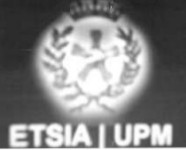
“Etsia logo”
-This is the "Tauro HF" engine with four cylinders in cross (radial or X) running with the Diesel cycle.
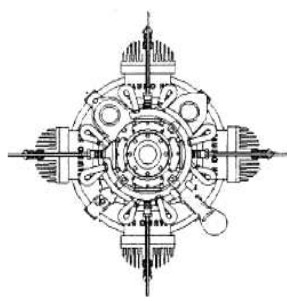
“Tauro HF, front view”
-It is a two-stroke, multi-fuel engine, turbocharged, ignited by compression (Diesel) whose fundamental application is aimed at RPV and light aviation.
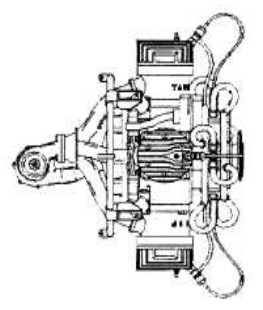
“Tauro HF, side view”
-It gives 44 Kw of power at 2,600 rpm and it has 1415 cc of total displacement. The compression ratio is really high: 21 to 1.
-It has direct injection and it can run on JP-5, JP-8 (aviation kerosene and it is assumed that above all it will also do with the Jet A-1) in addition to diesel fuel. The cooling system is mixed air/oil.
From Appendix 6: It is the National Institute of Aerospace Technology, but the full name was for a long time INTAET, when referring to ET (Esteban Terradas)
Inta was located in the outskirts of Madrid, in Ajalvir-Torrejón de Ardoz. For those interested in engines, the Institute tested those produced in the country for its approval. Therefore it had several FAMO test benches.
-Perhaps the most interesting is that with German technology it was set up in the beginning of the 1940's, starting with a large new building completely adapted for this purpose.
-The bench for high-power engines is a marvel. The building with vertical air-flows in and out, had a turbo-blower to simulate relative winds of more than 300 Km/hr. It was of an enormous size, the diameter of the fan would be about 5/6 meters.

“Blower front view"
-From the rear, a nozzle directed the wind flow to the tested engine.
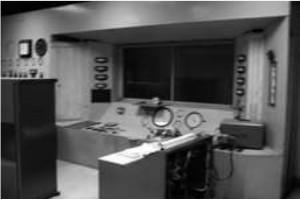
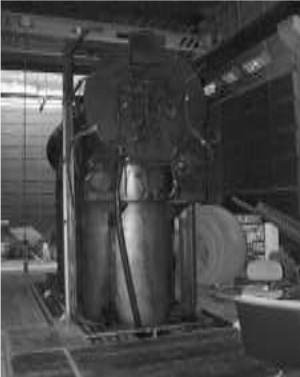
"Control room, blower and bench"
-The blower nozzle was in front of the engine bench, not less than 5 meters high, capable to deal with the largest engines of the time.
-The other facet of INTA is the research and testing of own products such as meteorological rockets and probes, based on the BAJ-Vickers (British AeroJet), and reaching the more advanced Deneb and Capricorn.

“Trailer with a Deneb”
-As well as the Inta 255, 300 and 100 projects, the Deneb and Capricorn were canceled after a few tests. The tests were carried out in El Arenosillo, Huelva.
-It all started with the air-to-ground S-type rockets in 1945 for military application, ending with the S-12 in 1985.
-The Inta 255 served for training between the years 1966 and 1969.
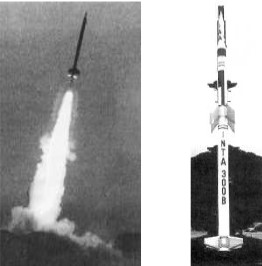
“Inta 255 and 300B”
-The advanced 300 was tested from 1970 to 1975, and the 300B during 1992 and 1993. They were two-stage and with Snipe, Heron and Fulmar solid-rocket engines.
-The Inta 100s were built in three stages. They were used with meteorological load. The engines were based on the first S-12 called the "cigarette" type because of its shape.
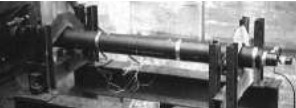
“Inta 100 engine test”
They did previous tests with the Inta 100 between 1976 and 1980. Between 1981 and 1984 they did the 1st part of launches, and between 1990 and 1991 the 2nd part.
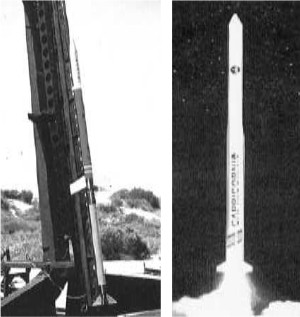
“An Inta 100 and the Capricornio”
-The Capricorn program was canceled due to financial difficulties.
-The largest Inta project is currently a test bench for turbines of more than 100,000 lbf.
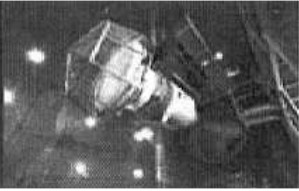
"Test bench for large turbines"
Engines of INTA
Model: 4 cyl. radials Diesel “Tauro”
Arquitecture:
Cooling:
Total Displacement:
Bore / Stroke:
Power:
Weight:
Model: Varios motores cohete
Arquitecture:
Chambers:
Fuels:
Feed System:
Ignition:
Thrust:
Weight:


